During the HDR tutorial, I set the bracketing at 3 frames by 2-stops. I personally use this setting because my camera will do this automatically. Other cameras (D300s specifically) will allow 7 frames by 1-stop, and others up to 9 frames by 1-stop.
There are two different aspects to be tested here.
- What range (+-EV) is necessary to capture?
- Is a range of 1-stop better than a range of 2-stops?
This post will focus on the first aspect, what range is necessary to capture. Throughout this experiment, the frames will be all 2-stops apart.
Hypothesis
The purpose of HDR imagery is to capture the entire range of light in the scene. To ensure this happens, the bracketed images must contain images where the highlights and shadows are not blown out. Therefore, the hypothesis being tested is as follows:
For a successful HDR, the darkest image must contain no blown out highlights, and the brightest image must contain no blown out shadows.
Settings
For all the HDR images made in this post were set as the same for all image combinations tested. I used the "Mild" preset I have made in Photomatix, and applied my "HDR Processing" Lightroom preset after import.
Example #1: Tree Path
This example is a 9 frame 1-stop sequence taken in the Public Gardens in Halifax, NS. The 9 images and their corresponding histograms are shown below.
 |
| 60mm | 1/60s | f/5.6 | ISO100 | 9 bracketed images by 1-stop |
Viewing the histograms, the only frame where the highlights are not blown out is -4. To test the hypothesis, the three frames to be merged are the -4, -2, and 0.
 |
| -4 | -2 | 0 |
If my hypothesis is correct, the picture above will produce the best result out of other combinations shots. The following three images are combinations of 3 images stepping up from the -4,-2,0 above.
- -3, -1, +1
- -2, 0, +2
- -1, +1, +3
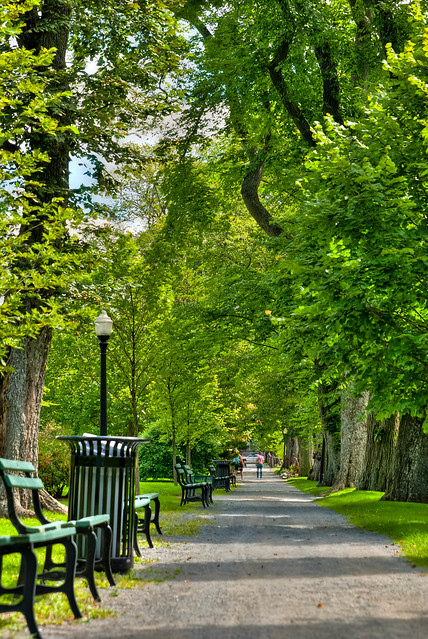 |
| -3 | -1 | +1 |
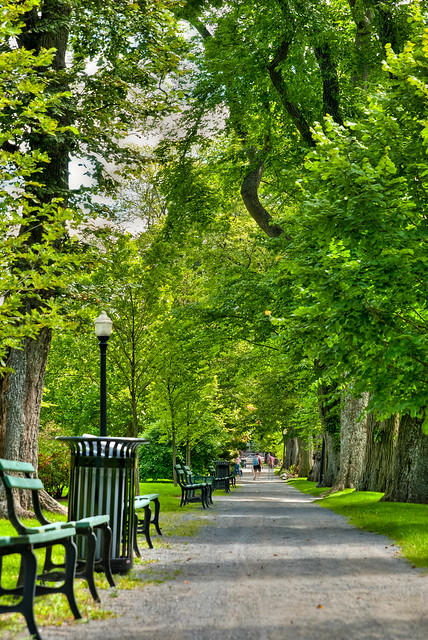 |
| -2 | 0 | +2 |
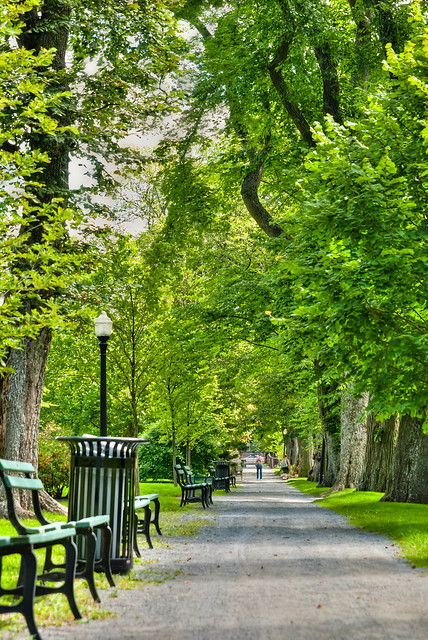 |
| -1 | +1 | +3 |
Focus on the section of the sky in the top left of the image. As the midpoint moves up, the section of the sky becomes more milky and loses detail. The -3, -1, +1 combination is still acceptable, leading to a new rule to test:
Underexpose HDR bracketed shots by -1EV from the nominal
For fun, I also processed the -4, -2, 0, +2, +4 combination. Something funky happens in the highlights on the gravel pathway that I can't explain.
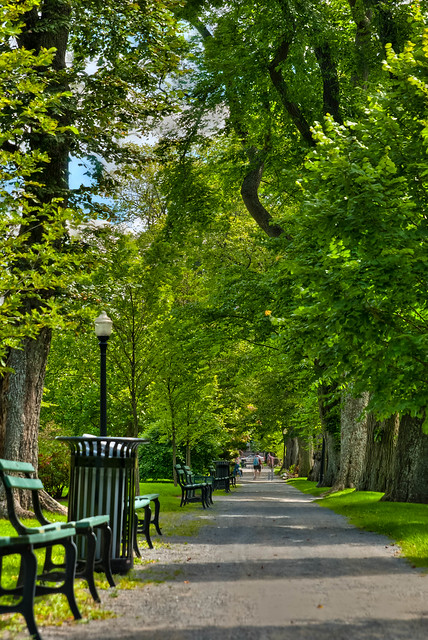 |
| -4 | -2 | 0 | +2 | +4 |
Example #2: Colorado
Miguel graciously let me borrow a series of pictures he took while visiting the Rocky Mountain National Park in Colorado. This 7 frame 1-stop sequence is shown below with the corresponding histograms.
 |
| 10mm | 1/30s | f/9 | ISO200 | 7 images bracketed by 1-stop |
From viewing the histograms, it appears the Miguel (or the D300s) nailed the center exposure. The -2, 0, +2 bracket will capture all the dynamic range of the scene.
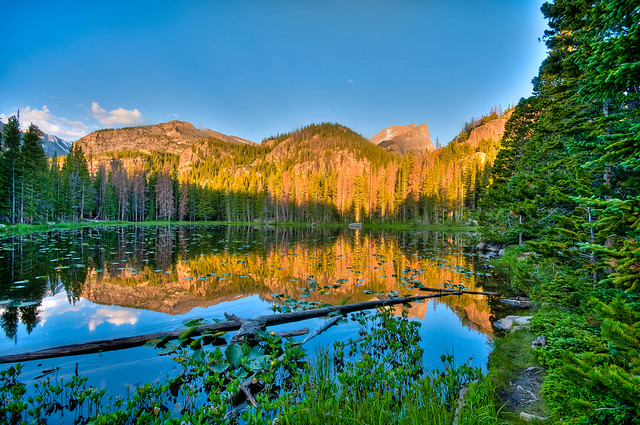 |
| -2 | 0 | +2 |
If the initial hypothesis is correct, this image will produce the best result of all the combinations of 3 images by 2-stops. The following two images are a merge of the combinations 1-stop above and 1-stop below this result.
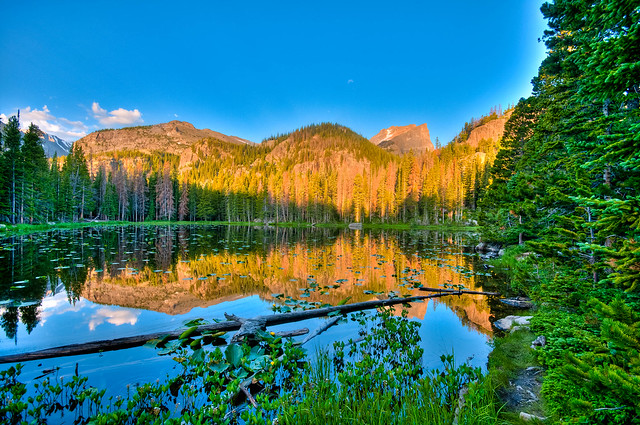 |
| -3 | -1 | +1 |
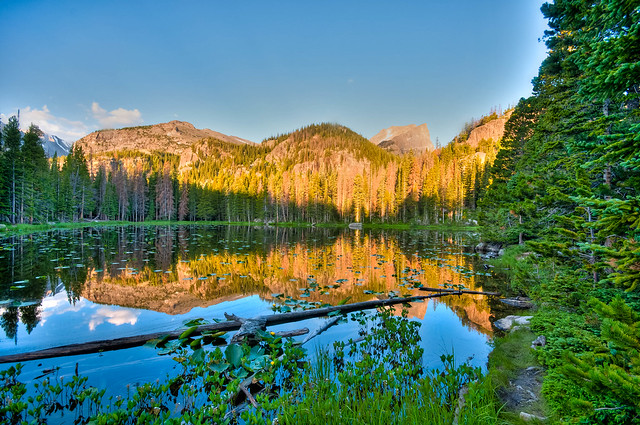 |
| -1 | +1 | +3 |
The lower exposure bracket result looks very similar to the -2, 0, +2. In the higher exposure bracket the sky loses detail and becomes milky. The result further supports my secondary hypothesis of underexposing HDR by 1-stop.
For fun, I also processed the -3, -1, +1, +3 combination.
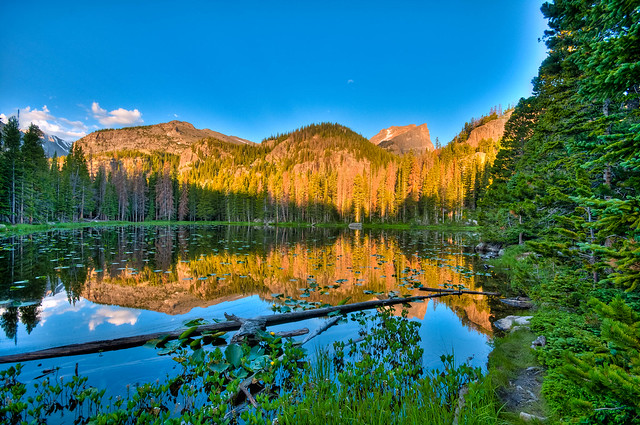 |
| -3 | -1 | +1 | +3 |
Example #3: Mahone
This example is a 9-frame 1-stop sequence taken in Mahone Bay, Nova Scotia just after sunset.
 |
| xmm | 1/x s | f/x | ISOXXX | 9 images bracketed by 1-stop |
Applying the hypothesis that we are trying to prove actually provides an interesting result. Only the 0 and +1 exposures are required to ensure no blown out shadows or highlights. Below is the result of that merge.
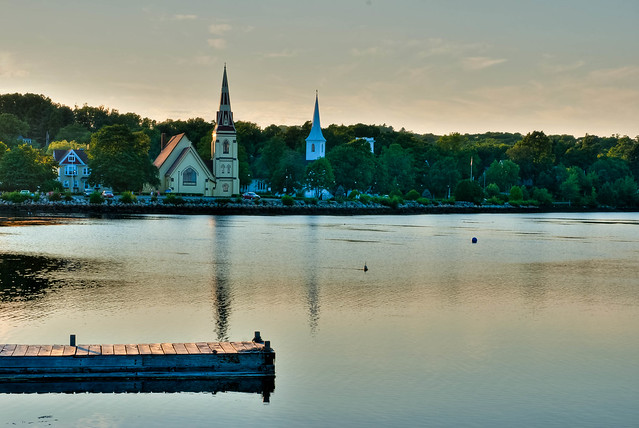 |
| 0 | +1 |
This is surprisingly adequate with just two exposures. But for good measure the other combinations below were also merged.
- -2 | 0 | +2
- -1 | +1 | +3
- -3 | -1 | +1
- -4 | -2 | 0 | +2 | +4
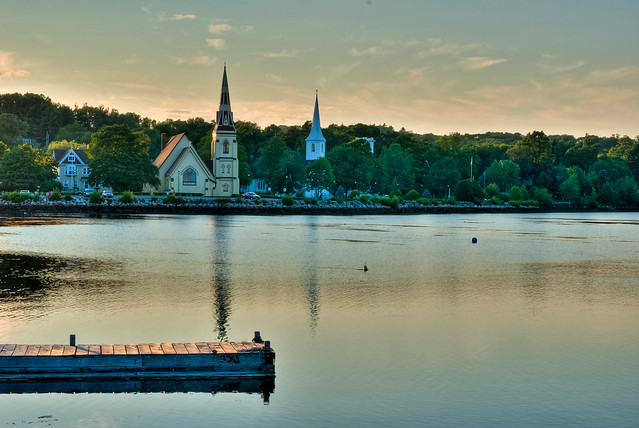 |
| -2 | 0 | +2 |
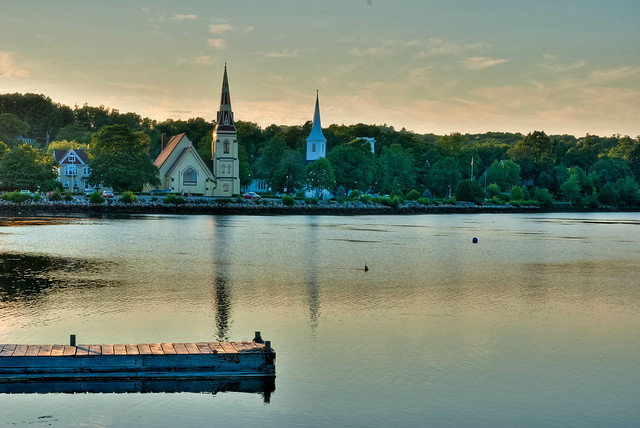 |
| -1 | +1 | +3 |
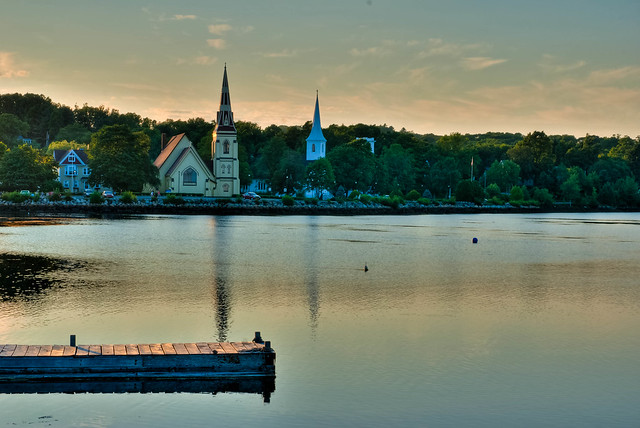 |
| -3 | -1 | +1 |
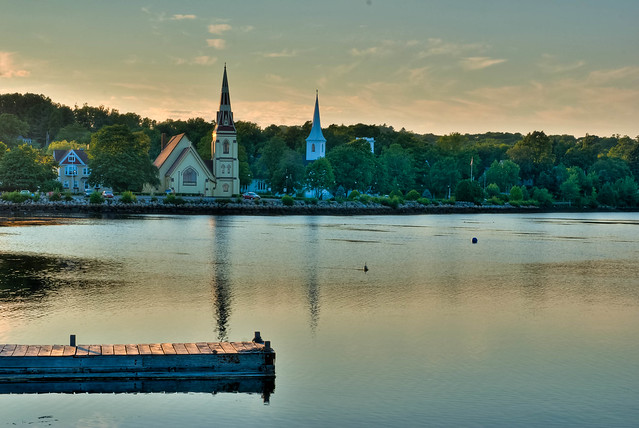 |
| -4 | -2 | 0 | +2 | +4 |
None of these results are really bad or have any big problems. This is likely due to the face that they all include all the dynamic range. Notice the amount of detail in the trees and churches (the shadows) that are gained by having more images, especially the brighter ones. My original hypothesis of capturing all the dynamic range still holds, while the second one is of concern. Out of all the images, the one underexposed by 1-stop (-3|-1|+1) is my least favorite due to the lack of shadow detail.


















great finds! post the histograms of the resulting images
ReplyDeleteAlthough I could post the histograms of the results, I did not because I don't think that it's necessary. I assume that you're looking to see if the histogram contains all the data (with nothing clipped). While that makes sense when the goal of capturing the entire dynamic range, that is not the case for these reasons:
ReplyDelete1. These are processed images. In Lightroom I applied Blacks and +Exposure to all images. I would not be surprised if I blew out highlights or shadows. And after looking through the histograms, I did blow out the highlights and/or shadows on all images.
2. Blacks add contrast. If nothing was clipped, the image would have no contrast without pure black shadows. I could make the same argument for blown highlights.
The goal of HDR is to make a better image than what you started with. While that is very subjective, I believe that the increased contrast add dimension and impact to the image.
good points ...
ReplyDeletequestion: what would be the best way to remove the halo around the tree? It looks like all of the images have them.
Also, would it make a difference to shoot -3,0,3 as opposed to -2,0,2?
And finally, I wonder if it would be beneficial to superimpose all of the histograms to see which ones you would need to create a "balanced" histogram as an output. Just a thought